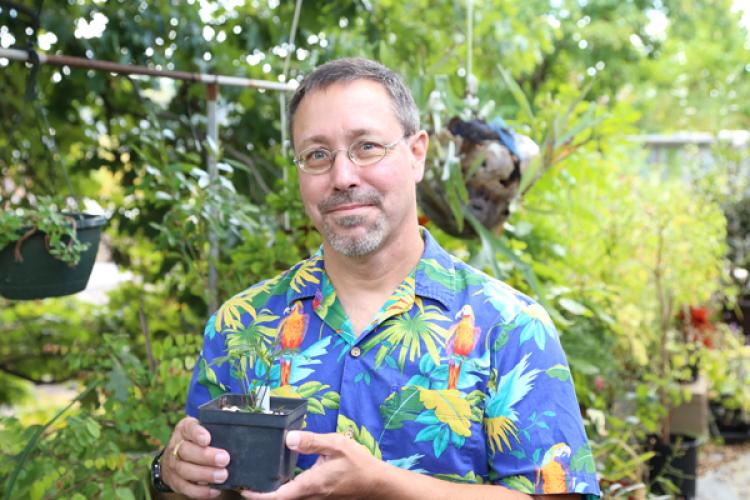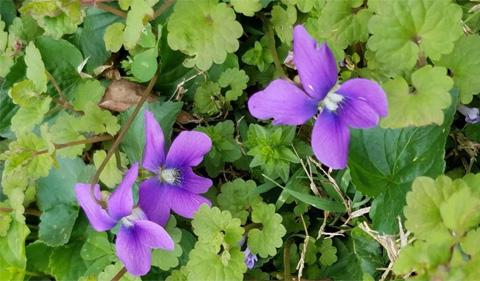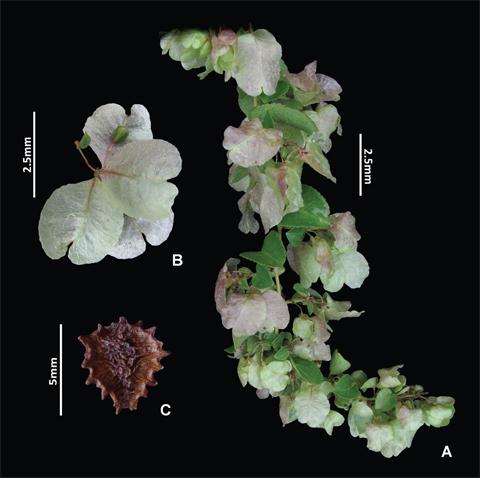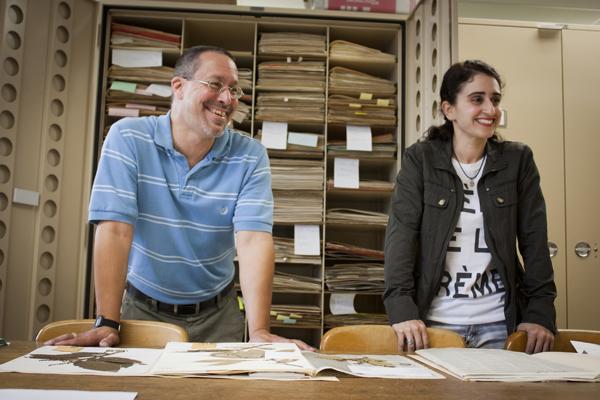
Harvey Ballard describes two new violet species in the northeastern United States, notes 'variants' still to be classified

Just as tiny violets spread their spring blanket of purple across the local landscape, Harvey Ballard's new monograph describes all the known types of violets — including some new species — in the Violaceae (violet) family in the northeastern United States and adjacent Canada. It also lays out what scientists still need to work on.
Ballard, professor of environmental and plant biology in the College of Arts and Sciences, specializes in the many diverse aspects of plant organismal biology including traditional systematics, phylogenetics, molecular ecology, population genetics and conservation genetics. Ballard also enjoys making violet jelly this time of year. (See his recipe for violet jelly.)

Ballard has studied violets for 45 years, and he has engaged many Ohio University students in field, museum and laboratory investigations during the 25 years he’s been at OHIO. Their laboratory investigations of eastern North America's violet flora since 2012 have included multiple sources of evidence such as traits, ecology, reproductive biology, common garden observations across seasons, and genetic differences — all filtered through modern species concepts to better define the taxonomy of the various violet genera (species groups) and species in the region.
"The element that unites most of our research efforts is the use of comparative molecular evidence to answer organism- or lineage-level questions," said Ballard, whose lab often employs markers such as DNA sequence, microsatellites and genotyping-by-sequencing data in the lab combined with results from field and museum studies.

More to learn about informal variants and wild hybrids
Asking how many species of violets exist isn't the only question for Ballard's lab, though they have detected around 10 undescribed species recently and have just described two of them in the genus Viola. Even though they have extensively documented flower color, plant structures, and geographic distribution for the known violets, some mysteries remain. They refer to these in the monograph as variants.

Along with co-editors Misako Nishino and John Kartesz, Ballard's work led to the recognition of 58 native and eight introduced species, one subspecies, one variety and one form, 10 informal variants, and 113 wild hybrids in the region, representing the genera Cubelium, Pombalia, and Viola.
"We found anomalous variants in Viola emarginata, Viola palmata, Viola septentrionalis, and Viola sororia that currently lack sufficient information for taxonomic decisions, but we present them in our monograph to encourage continued study, collection and documentation,” Ballard said.
“Hopefully, lots of folks will use it [the monograph] to get to know the violets of the northeastern region, and will help us study and understand the 'variants' out there that we don't have enough scientific evidence to deal with at the moment," he said.
"Now on to the southeastern violets!" said Ballard, who has already published work on members of the violet family around the world with collaborators, and especially in Latin America and North America. Samples collected by Ballard from around the world are stored in the Floyd Bartley Herbarium at Ohio University.
Ballard's monograph, Taxonomic treatment of the Violets (Violaceae) of the northeastern United States and adjacent Canada, was published in late March in the Journal of the Torrey Botanical Society, for which Ballard won the Torrey Botanical Society Monograph Award.
